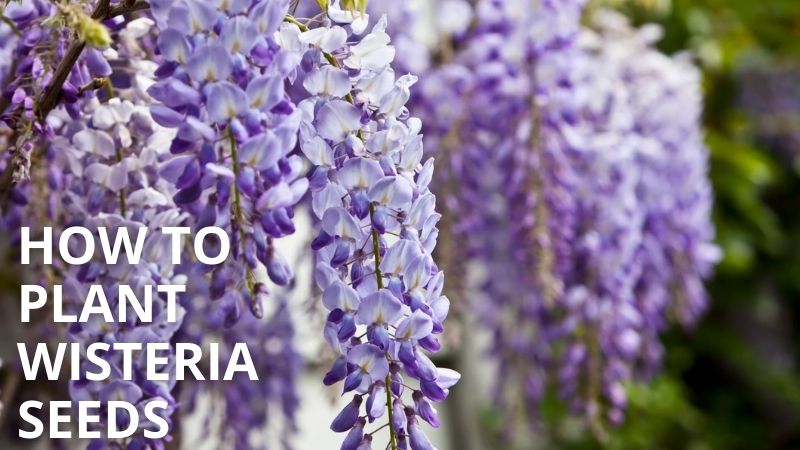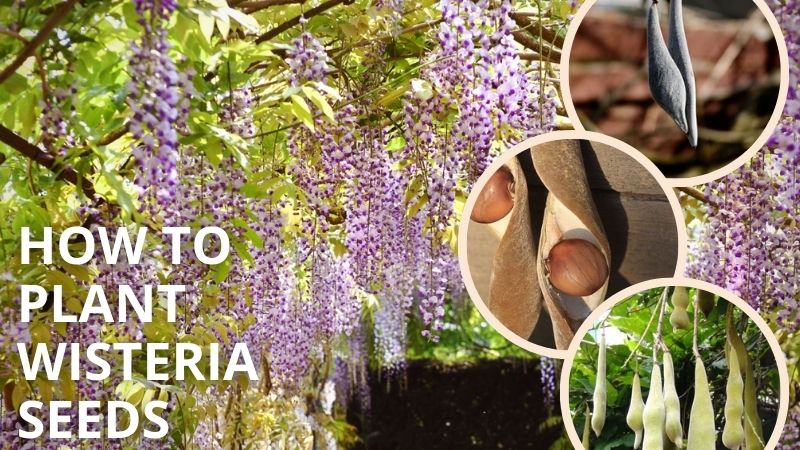PLANT TREE
How to Plant Wisteria Seeds: A Step-by-Step Guide
Wisteria, known for its cascading clusters of fragrant flowers, is a stunning addition to any garden. While many gardeners opt for growing wisteria from cuttings or grafted plants, growing them from seeds can be a rewarding experience. So how to plant wisteria seeds? Floral Garden Ideas will walk you through the process of planting wisteria seeds, from preparation to nurturing your seedlings into healthy plants.
Understanding Wisteria
Before diving into the planting process, it’s important to understand the nature of wisteria. There are two main types: Chinese wisteria (Wisteria sinensis) and Japanese wisteria (Wisteria floribunda). Both types are vigorous climbers, known for their beautiful, cascading blooms. However, wisteria grown from seeds can take several years (sometimes up to 15) to flower, compared to grafted plants which bloom much sooner.
Collecting and Preparing Seeds
Wisteria seeds are typically collected from mature pods that form after the flowering season. Here’s how to collect and prepare the seeds:
- Harvesting Seeds: In late summer to early autumn, look for mature seed pods on an established wisteria plant. The pods are usually brown and slightly dry. Carefully pick the pods and place them in a paper bag to dry further.
- Extracting Seeds: Once the pods are fully dry, they will split open. Extract the seeds from the pods and discard any that are damaged or discolored.
- Scarification: Wisteria seeds have a hard outer coating that makes germination difficult. Scarification involves nicking or sanding the seed coat to help water penetrate. Use a nail file or sandpaper to gently scratch the surface of each seed.
- Soaking Seeds: After scarification, soak the seeds in warm water for 24 hours. This helps to further soften the seed coat and encourages germination.
How to Plant Wisteria Seeds
Once your seeds are prepped, it’s time to plant them. Here’s a step-by-step guide:
- Choosing the Right Container: Select small pots or seed trays with good drainage. Fill them with a well-draining seed-starting mix. Avoid using garden soil as it may contain pathogens.
- Sowing the Seeds: Plant the seeds about 1/2 inch deep in the soil. Cover them lightly with the soil mix and water gently to moisten.
- Creating the Right Environment: To germinate, wisteria seeds require a warm, humid environment. Cover the pots with plastic wrap or use a propagator to maintain moisture.
- Providing Adequate Light: Place the pots in a bright, indirect light location. A windowsill or undergrowth lights are suitable. Maintain a consistent temperature of approximately 70°F (21°C) for optimal seed germination.
Caring for Seedlings
Germination can take anywhere from a few weeks to a couple of months. During this time, it’s crucial to monitor moisture and light levels. Once the seeds have germinated and seedlings have emerged, follow these steps:
Thinning:
If multiple seeds germinate in one pot, thin them out to avoid overcrowding. Keep the strongest seedling in each pot and gently transplant or discard the others.
Transplanting:
When the seedlings have grown to about 4-6 inches tall and have a few sets of true leaves, they can be transplanted into larger pots. Use a potting mix that includes some compost for added nutrients.
Hardening Off:
Before transplanting your seedlings outdoors, they must be acclimatized. This process, known as hardening off, gradually exposes seedlings to outdoor conditions over about two weeks. Start by placing them outside for a few hours daily, steadily increasing the duration and sunlight exposure.
Planting Outdoors
Choosing the Right Location:
Wisteria thrives in full sun and well-draining soil. Select a location with plenty of space for the vines to grow and a sturdy structure for them to climb, such as a pergola or trellis.
Preparing the Soil:
Wisteria thrives in fertile, well-draining soil. Incorporate compost into the planting area to enrich the soil and improve its structure.
Planting the Seedlings:
Dig a hole that’s large enough to accommodate the seedling’s root ball. Place the seedlings in the hole, backfill with soil, and water thoroughly. Space multiple plants at least 10-15 feet apart to allow ample room for growth.

Long-Term Care
Wisteria requires regular maintenance to ensure healthy growth and abundant blooms:
Watering
Keep the soil consistently moist, especially during the first couple of years. Once established, wisteria is relatively drought-tolerant but will benefit from regular watering during dry spells.
Feeding
Fertilize your wisteria with a balanced fertilizer in early spring to encourage healthy growth. Avoid high-nitrogen fertilizers, which can prioritize leaf development over flower production.
Pruning
Pruning is crucial for managing wisteria’s vigorous growth and encouraging flowering. Prune in late winter to remove any dead or crowded branches. In summer, prune the long, whippy shoots to about 6 inches to maintain shape and promote flower bud formation.
Training
Train your wisteria vines to climb their support by gently tying them with garden twine. Regularly inspect and adjust the ties to avoid damaging the stems.
Troubleshooting Common Issues
- Poor Flowering: If your wisteria isn’t blooming, it may need more sunlight, pruning, or time to mature. Over-fertilizing with nitrogen-rich fertilizers can also inhibit blooming.
- Pests and Diseases: Wisteria is relatively pest-resistant but can occasionally suffer from aphids, scale, or fungal diseases. Monitor your plants regularly and treat any infestations promptly with appropriate insecticides or fungicides.
- Invasive Growth: Wisteria can become invasive if not properly managed. Regular pruning and training are essential to keep it under control.
Conclusion
Growing wisteria from seeds requires patience and careful attention, but the reward of seeing your plants mature and bloom is well worth the effort. By following this guide, you’ll be well on your way to cultivating beautiful, fragrant wisteria vines that can transform your garden into a picturesque haven.


